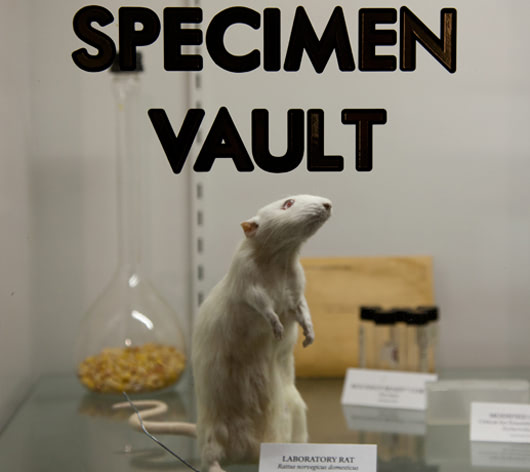The wunderkammer – the traditional repository of natural history curiosities and cultural relics – has been updated by the Center for PostNatural History in Pittsburgh, which opened the doors of its new museum this month. A curated microcosm populated by plant and animal specimens modified by man, this is the first synthetic history museum dedicated to documenting our Age of Anthropocene.
The museum's curator, artist Richard Pell, has been painstakingly collecting examples of the 'PostNatural': "living organisms that have been altered through processes such as selective breeding or genetic engineering". These organisms are not archived (unless accidentally, as Rich discovered) in natural history collections. Are genetically engineered Glo-Fish, Roundup-Ready maize and 'biosteel' goats post-natural organisms from the branches of the Synthetic Kingdom, or does their 'true' nature remain preserved?
Pell's research has taken him on quite a journey through the living (and taxidermied) kingdoms, from the archives of the Smithsonian National Museum of Natural History to dealings with Monsanto. Through the PostNatural taxonomy, the collection raises vital questions of intellectual property, genetic modification, scientific objectivity and as Pell describes in this interview, how we cannot forget that "the project of science is never divorced from the cultural context".

Share your thoughts and join the technology debate!
Be the first to comment